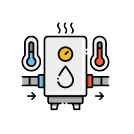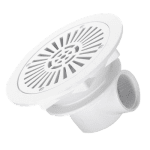Swimming pool maintenance cost
Swimming pool maintenance costs can vary widely depending on factors such as pool size, location, type of pool, equipment efficiency, and frequency of use. Understanding these costs is essential for pool owners to budget effectively and ensure their pool remains clean, safe, and enjoyable throughout the year. Let’s delve into the various components of swimming pool maintenance costs and how they can impact your budget.
1. Regular Maintenance Costs (Swimming pool maintenance cost)
Regular maintenance costs encompass the ongoing tasks necessary to keep the pool clean and functioning optimally. These include:
- Chemicals: Pool chemicals such as chlorine, shock treatment, pH balancers, and algaecides are essential for maintaining water quality. The cost of chemicals can vary based on the pool size, frequency of use, and specific chemical requirements. On average, pool chemicals can cost anywhere from $50 to $150 per month, depending on the pool size and season.
- Water Testing Kits: Testing kits are used to monitor water chemistry levels such as pH, chlorine, alkalinity, and calcium hardness. Basic test kits are affordable and can range from $20 to $50, while more advanced digital testers can cost upwards of $100.
- Cleaning Supplies: Supplies such as skimmer nets, brushes, vacuum heads, hoses, and pool cleaning chemicals contribute to routine cleaning costs. These supplies typically range from $100 to $300 annually, depending on the quality and quantity needed.
2. Energy Costs (Swimming pool maintenance cost)
Running pool equipment such as pumps, heaters (if applicable), and pool lights can significantly impact energy bills. Here are the main contributors to energy costs:
- Pool Pump: The pump circulates water through the filtration system to remove debris and maintain water clarity. Pumps can consume a substantial amount of electricity, especially if they run for extended periods. Energy-efficient pumps can help reduce costs but typically range from $500 to $1,500 upfront. Monthly electricity costs for running a pool pump can vary widely depending on local electricity rates and pump efficiency, but estimates range from $50 to $150 per month.
- Heater (if applicable): Gas or electric pool heaters are used to extend the swimming season by maintaining water temperature. Heating costs can vary significantly based on the pool size, desired temperature, climate, and heater efficiency. Annual heating costs can range from $500 to $2,000 or more, depending on usage patterns and local energy prices.
- Pool Lights: Energy-efficient LED pool lights are becoming more common and can help reduce electricity costs compared to older incandescent or halogen lights. LED lights typically cost $200 to $500 upfront, with minimal ongoing electricity costs.
3. Seasonal Maintenance Costs (Swimming pool maintenance cost)
Seasonal maintenance tasks are essential to prepare the pool for summer use or protect it during the winter months:
- Opening and Closing Services: Many pool owners hire professionals to open and close their pools each season. Opening services typically include removing the cover, inspecting equipment, and balancing water chemistry. Closing services involve winterizing the pool to protect it from freezing temperatures and debris. Opening and closing services can cost $200 to $500 each, depending on the complexity and size of the pool.
- Winterization Supplies: Winterizing supplies such as winter covers, closing chemicals, and freeze guards are necessary to protect the pool during colder months. These supplies typically range from $100 to $300 annually, depending on the pool size and specific requirements.
4. Repair and Replacement Costs (Swimming pool maintenance cost)
Over time, pool equipment and components may require repair or replacement:
- Pump and Filter Replacement: Pool pumps and filters have a lifespan of approximately 5 to 10 years. Replacing a pump can cost $500 to $1,500 or more, while filter replacements range from $300 to $1,000 depending on the type and size.
- Liner Replacement: Vinyl liners typically last 5 to 10 years before needing replacement due to wear and tear or damage. The cost of replacing a vinyl liner can range from $2,000 to $4,000 or more, depending on the pool size and complexity.
- Leak Detection and Repair: Detecting and repairing leaks in the pool or plumbing system may require professional assistance and can range from $300 to $1,000 or more, depending on the extent of the leak and repairs needed.
5. Professional Services (Swimming pool maintenance cost)
While many pool maintenance tasks can be DIY, some owners prefer to hire professionals for certain services:
- Weekly Maintenance Services: Hiring a professional service for weekly pool maintenance, including cleaning, chemical balancing, and equipment checks, can cost $75 to $150 per visit, depending on the region and level of service.
- One-Time Services: Professional services for specific tasks such as deep cleaning, algae removal, or equipment repair can range from $100 to $500 or more, depending on the complexity of the job.
6. Insurance and Additional Costs (Swimming pool maintenance cost)
- Liability Insurance: Some homeowners opt to increase liability insurance coverage to protect against accidents or injuries that may occur in or around the pool. Costs for additional liability coverage can vary based on the insurer and coverage limits.
- Permit Costs: Depending on local regulations, installing or renovating a pool may require permits. Permit costs can vary widely depending on location and the scope of the project.
Swimming pool maintenance costs vary depending on the size, type, and location of the pool, as well as the services required. On average, homeowners spend between $100 to $300 per month on routine pool maintenance, which includes cleaning, chemical balancing, and filtration system upkeep.
Key Factors Affecting Pool Maintenance Costs: (Swimming pool maintenance cost)
- Cleaning and Skimming: Regular cleaning services, which include skimming debris, vacuuming the pool, and brushing the walls, typically cost around $75 to $150 per visit, depending on the pool size and condition.
- Chemical Balancing: Maintaining proper water chemistry is essential for safety and longevity. Chemical costs (such as chlorine, pH balancers, and shock treatments) range from $20 to $100 per month, depending on the pool’s usage and local water conditions.
- Filter and Pump Maintenance: Regular filter cleaning and pump servicing can add $100 to $200 annually. Cartridge filters need replacement every 1-2 years, costing around $100 to $200, while sand filters require periodic backwashing.
- Seasonal Costs: Seasonal opening and closing services, including cleaning, water balancing, and equipment inspections, range from $150 to $500 annually.
Overall, pool maintenance costs can vary, but regular upkeep helps avoid expensive repairs, ensuring a clean and safe swimming environment.
Owning a swimming pool is a luxury that comes with both the enjoyment of having a private oasis and the responsibility of maintaining it. Whether you have an in-ground or above-ground pool, regular maintenance is essential to keep the water clean, safe, and inviting. However, one of the most common concerns for pool owners is the ongoing cost of maintenance. This article will explore the factors influencing swimming pool maintenance costs, typical expenses, and tips on how to manage them effectively.
1. Factors Affecting Swimming Pool Maintenance Cost
Several factors determine how much you will spend on swimming pool maintenance each year. These factors include the type of pool, the size of the pool, location, usage frequency, and the condition of the pool and its equipment.
- Type of Pool: In-ground pools tend to have higher maintenance costs compared to above-ground pools. The more complex structure of in-ground pools requires more specialized cleaning and maintenance, including pool equipment, resurfacing, and repair costs. Above-ground pools, on the other hand, generally have lower maintenance costs due to their simpler design and smaller size.
- Pool Size and Shape: Larger pools require more chemicals, more time to clean, and more energy to maintain. Unusual shapes or intricate designs may also require special tools and more labor. A larger pool will also have a more complex filtration and circulation system, which can increase costs.
- Location and Climate: The climate where the pool is located greatly impacts maintenance costs. In areas with frequent rain, storms, or wind, there may be more debris, which could lead to additional cleaning. Pools in warmer climates with high UV exposure may require more frequent chemical adjustments, particularly for chlorine, to maintain water quality.
- Frequency of Use: A pool that’s used daily will require more upkeep than one that’s used occasionally. Pools that see regular heavy usage need more frequent cleaning, filtration, and chemical treatments to prevent contaminants from accumulating in the water.
2. Common Swimming Pool Maintenance Expenses
Here are the most common expenses pool owners face when it comes to maintaining their pool:
- Chemicals: The cost of pool chemicals is one of the most recurring expenses for pool owners. Pool chemicals include chlorine, pH balancers, algaecides, stabilizers, and shock treatments. On average, pool chemical costs can range from $200 to $400 annually, depending on the size of the pool and frequency of use. A pool that is regularly used or exposed to harsh weather may require more chemicals.
- Cleaning and Labor: Pool cleaning can either be done by the owner or outsourced to a professional service. DIY pool cleaning involves purchasing cleaning tools such as a skimmer, vacuum, and brush, which may cost between $100 to $300 initially. Professional pool cleaning services typically charge between $100 and $250 per month, depending on the pool’s size and the services required. This fee includes cleaning the pool, checking the filter, testing the water chemistry, and sometimes adding chemicals.
- Filter and Equipment Maintenance: Pool filtration systems need to be cleaned and serviced regularly. The cost to replace or repair pool filters ranges from $50 to $200 depending on the type of filter. For more complex systems like diatomaceous earth (DE) filters or sand filters, professional servicing can cost between $100 and $200 per year. Pumps, heaters, and saltwater chlorinators also need occasional servicing, with typical repairs costing between $100 and $500 or more, depending on the issue.
- Repairs and Replacement: Over time, pool equipment such as pumps, heaters, and filters may need repairs or replacement. On average, pool owners can expect to pay $200 to $800 for a pump replacement, $400 to $1,500 for heater repairs or replacement, and $200 to $500 for tile or liner repairs. Regularly inspecting and maintaining the pool’s equipment can help reduce costly repairs.
- Energy Costs: Pools require significant energy to operate, especially if you have a heater or an automated cleaning system. Energy costs for running the pool pump can vary, but on average, pool pumps can consume between 1,000 to 2,000 kWh annually, which can amount to $150 to $500 per year in energy costs depending on the pump’s size, efficiency, and how often it runs.
3. Ways to Reduce Pool Maintenance Costs
While pool maintenance costs can add up, there are several strategies pool owners can use to reduce ongoing expenses:
- Regular Inspections: Inspecting the pool’s structure, equipment, and water chemistry regularly helps prevent small issues from turning into larger, costlier problems. If you catch issues early, you may be able to handle repairs yourself or avoid expensive professional fixes.
- Use Energy-Efficient Equipment: Investing in energy-efficient pumps and heaters can significantly lower your pool’s electricity consumption. Variable-speed pumps are known to be more energy-efficient than single-speed pumps, and they can reduce your energy costs by up to 60%.
- Automated Pool Cleaners: Investing in an automatic pool cleaner can save you time and money on manual cleaning. While automatic cleaners can cost between $400 to $1,000 initially, they reduce the need for regular professional cleaning services, and they help ensure that the pool remains cleaner between services.
- Proper Covering: Using a pool cover during the off-season can reduce the need for cleaning and chemical treatments. Pool covers help keep debris out of the water and prevent excessive chemical loss due to evaporation. They also help to reduce the heating costs if you use a pool heater.
- Proper Water Balance: Keeping your pool water properly balanced reduces the need for frequent chemical adjustments and protects the pool’s surfaces and equipment from damage. Proper water balance also helps prevent algae growth, reducing the need for costly algae treatments.
4. Estimated Annual Pool Maintenance Costs
For a typical in-ground pool, owners can expect to spend anywhere from $1,200 to $2,500 per year on maintenance. This includes chemical costs, cleaning services, repairs, and energy costs. Above-ground pools usually have lower maintenance costs, ranging from $500 to $1,500 annually, depending on pool size and usage.
Conclusion
Swimming pool maintenance costs can vary significantly based on factors such as pool size, location, equipment efficiency, and usage patterns. By understanding these costs and budgeting accordingly, pool owners can ensure their pool remains clean, safe, and enjoyable year-round. Regular maintenance, energy-efficient equipment, and proactive repairs can help minimize costs over the pool’s lifespan while maximizing its usability and value.


















